It’s seldom that I can profess to have become completely and overwhelmingly entranced with something. I can literally count the occasions singlehandedly. My wife (obvs), the Cornish village of Mousehole, my boat, the occasional dog, autumn skies and oysters to name only a few. However, I can categorically add another to the list in the form of West Sweden or more accurately Bohuslän, which is the utterly enchanting and captivating coastal region that sits just above Göteborg (Gothenburg) and stretches majestically to the Norwegian border just North of Strömstad. A wild and unfettered land, with fjords and inlets around every corner and islands dotted and scattered in bewitching archipelagos that beg exploration and inhabited by a people whose charm, warmth and welcome, have I rarely encountered.
Arrival at Göteborg Landvetter airport, is in itself, a lesson in efficiency. My baggage circles the reclaim even before my feet touch Swedish soil. The Flygbussarna shuttle ferries us to the city and a short walk from the terminus to the lavishly appointed Hotel Eggers, presents me with my first impression of this vibrant and welcoming jewel on the banks of the Göta river.

Spotless, uncluttered and purveying an innate sense of Nordic charm, the streets and open vistas of downtown Göteborg exude a relaxed and friendly welcome that, in the balmy late-September sunshine, is hard to ignore. As our guides lead us through the thronging but ordered city, only a pleasant hubbub is audible. No stifling and hurried masses here, just a coming and going of its people in harmonious industry. Trams gently clanging and gliding, the relatively spartan traffic obligingly and politely pausing, as the working populous go hither and thither about their business, across the multitude of hand-cut granite cobbles.
Our first piscatorial port of call is the aptly monikored Feskekörka (Fish Church), so named owing to its rather fetching and ecclesiastical lines. Sitting alongside the canal which encompasses the old part of the city and harking back to the omnipresent threat of Danish invasion, the building plays host to a hub of specialist market traders all engaged in the sale of the finest fish and shellfish that the local waters can deliver.

With a relaxed and informal lunch booked at the iconic Restaurang Gabriel, above and overlooking the glistening slabs of the traders at Feskekörka market hall, we peruse their offerings, harvested from the pristine waters of the Skaggerak and arranged resplendently and temptingly in a fitting array.
Green backed cod (torsk) and beautifully marbled turbot (piggvar) contrast with the packed rows of langoustine (havskräfta) and pools of pink prawns (räkor) that accompany each stall. The atmosphere of the lofty and chapel-like interior belies its function, as the city’s premier fish outlet and with nought but a tang of ozone to affirm its status, might lead you to believe it other than a fish market.
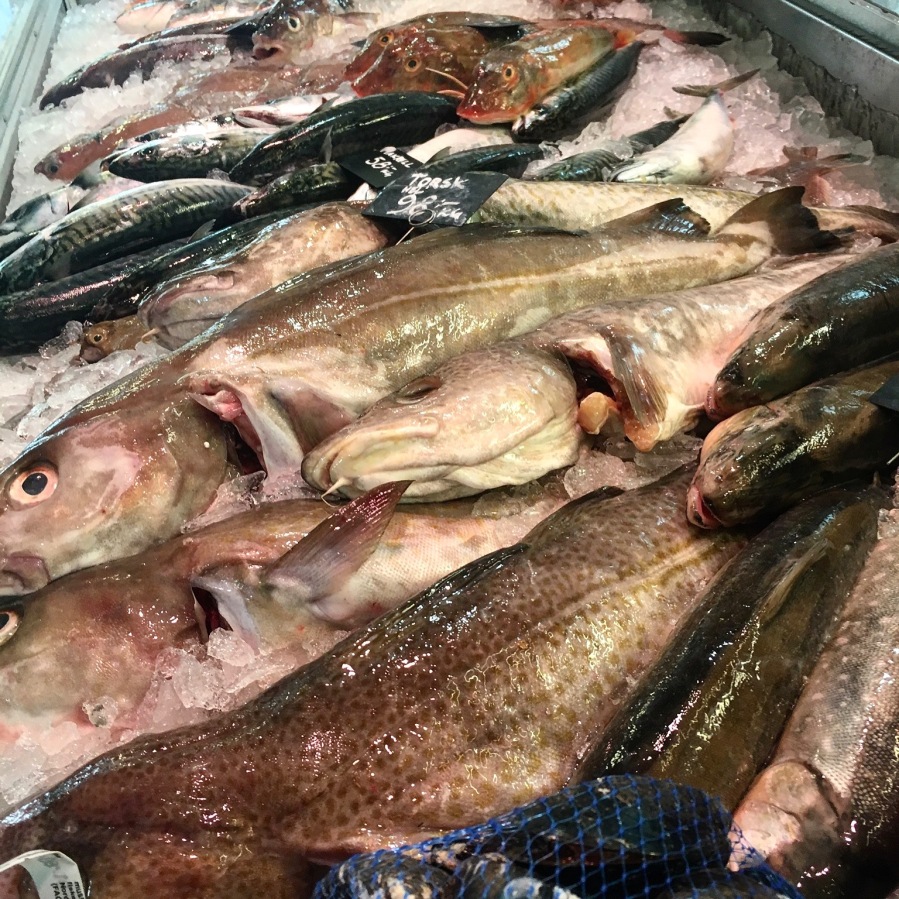
The home of recently-crowned world oyster opening champion (and owner) Johan Malm, Gabriel is the embodiment of Swedish marine cuisine. Simply cooked and served with minimal fuss and zero pretension, the menu is a glimpse of what the market offers below. Changing weekly after a three day run, it allows variation on a theme, using whatever the merchants have seasonally available
Lunch is simple and satisfying with native oysters from Grebbestad providing our entree, expertly shucked and turned before us by Head Chef Jonas Runnberg. Gloriously saline pouches of flavour, deliciously succulent and with ultimate provenance that bring forth my customary oyster smile. A true sensation, not dissimilar to our native UK fish, but slightly larger and plumper in body if anything.

Next up, the noted fish soup (fisksoppa), a legendary Gabriel staple. Forty years on, the restaurant still identifies itself by this dish, any variation in the ingredients being purely down to seasonal sourcing. Lustrous and creamy with today’s inclusion of mussels and hake, its rich background provided by the highest quality of stock, seasoned heartily and decorated with shrimp.

Jonas takes pride in telling me that Gabriel is the only Gothenburg restaurant not to sport a freezer. “We get all we need daily from downstairs,” he grins, gesturing below. “We pick what fish and shellfish we want, according to what’s available. It’s not like it used to be though,” he adds. “Fish is becoming more expensive and scarce. When I first started 20 years ago, there was plenty of everything to choose from, I would like to think with sustainable fishing we can return to those times.”
A selection of langoustine and shrimp follow, to compliment the lunch along with a gloriously delicate and refined aioli. Simple, succulent, seafare and served with serenity.
You’d have thought that following such a repast, an hour’s trip on a Paddan boat around the older parts of the city ducking and darting ‘neath the stupidly low bridges that criss cross the “moat” followed by fika, coffee and the obligatory cinnamon bun in the Haga quarter, would suffice for the day. Not so. Having spent an immensely enjoyable few hours pursuing just that, it was time, we were told, to assemble and wend our way to Fiskekrogen, seafood restaurant extraordinaire and another lavish serving of Goteborg’s finest.

Opened by ex-fisherman Lars Ahlström 20 years ago, Fiskekrogen is synonymous with the fine seafood scene in this, the second largest Swedish city. The beautifully designed, but modestly appointed restaurant is packed with local diners and is evidently a massively popular venue for devotees of West Sweden’s “skaldjur”

Accompanied by wines chosen by the Boss, we’re suitably indulged with a magnificent starter of butter baked lobster (Hummer) with a Jerusalem artichoke puree and cloudberries. Lobster season has just begun in Bohuslän (3rd week of September) and we learn that the first kilo sold the day before at the Fish Market (Fiskauktion) made a whopping 20,000 krona/kilo. Lobster is something of an obsession here in Sweden with many individuals setting pots along the coast for the beasts and although crab (krab) and langoustine are equally an important catch, lobster at this time of year appears to generate a certain euphoria and commotion that is tangible.
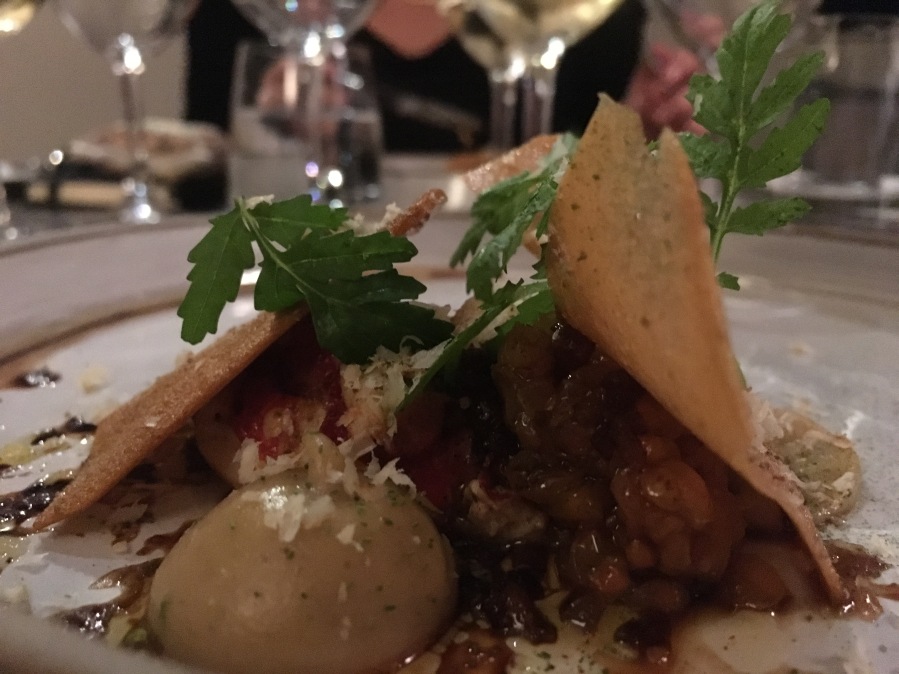
Our main course is the proprietor’s personal favourite and he joins us at the table to explain why. Delicately just-poached cod loin with kale, morels and chicken stock is a joy to behold. The firm but flakey and brilliant white flesh of the cod hauled from 200m of the cold, crystal-clear waters of the Skaggerak, is simply stunning, both in texture and flavour.

“These cod are special”, smiles our host. “They take a long time to mature in these waters and it’s for that reason they taste so good. They live on a diet of smaller fish, langoustines and molluscs and our waters harbour huge sustainable populations of which we’re very proud.” I affirm that the quality does indeed look superb from what I’d seen earlier at the Feskekörka and in a few hours time I would gaze on them again whilst touring the Fiskauktion. Lars should know. A fishermen since his youth, he’s been involved in catching, selling and cooking seafood all his life, is a fount of knowledge on the subject and eager to convey his passion. Personally, I could have talked to him all night.
The next morning dawns windy and wet, with a nasty squall lashing its way across the city, as in the swirling and clattering darkness, I’m ferried to the Fish Market and auction at the Fiskhamnen (Harbour).
Having frequented numerous fish auctions in the UK, I’m keen to know how the Swedish version differs. On initial looks, not a lot, I discover, but on closer inspection having wandered through the aisles of glistening boxes and listened to Market Inspector, Linda Hallberg’s commentary, I realise that the species being sold are laid out according to the vessel that landed, (unlike the UK which group the fish per species). A bell rings to signify the commencement of the next shout auction and merchants and fishmongers cluster round the auctioneer just as in or Newlyn or Peterhead.
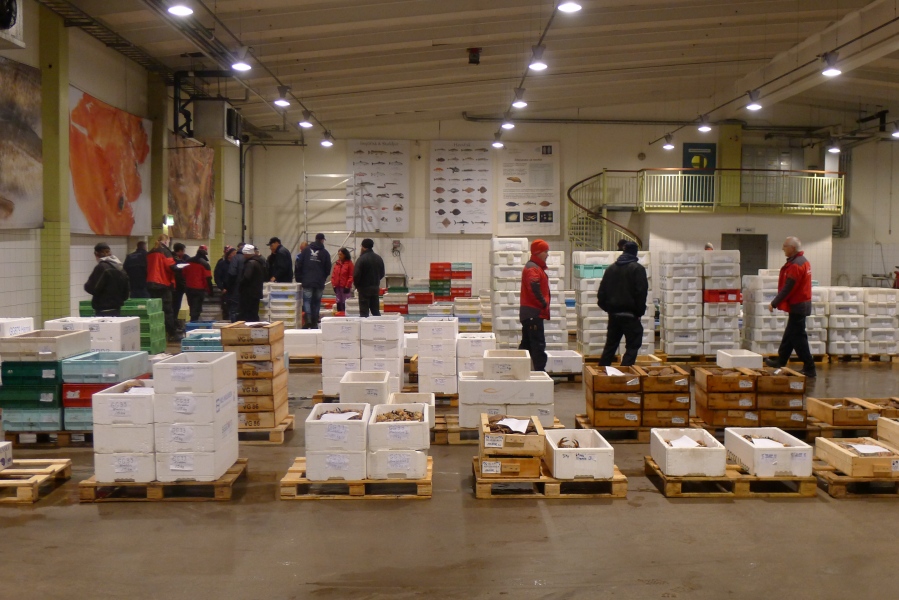

The usual suspects are all there, as you’d expect, from a mixed cold-water Northern Hemisphere fishery, but also some surprises. Sea Urchins, basket stars, and a fabulous selection of freshwater fish from the country’s numerous lakes, numbering exceptional quality pike, perch, eels, zander and bustling boxes of the invasive Signal crayfish from Lake Vättern.
A real “sweetshop moment” for a fish fanatic such as myself. Having learned more of the provenance, I’m left to my own devices, observing keenly the gestures of the buyers the variation in colour of the cod, haddock, plaice, witches squid and of course the deep blue black hues of the first of the seasons lobsters, looking resplendent in their boxes.


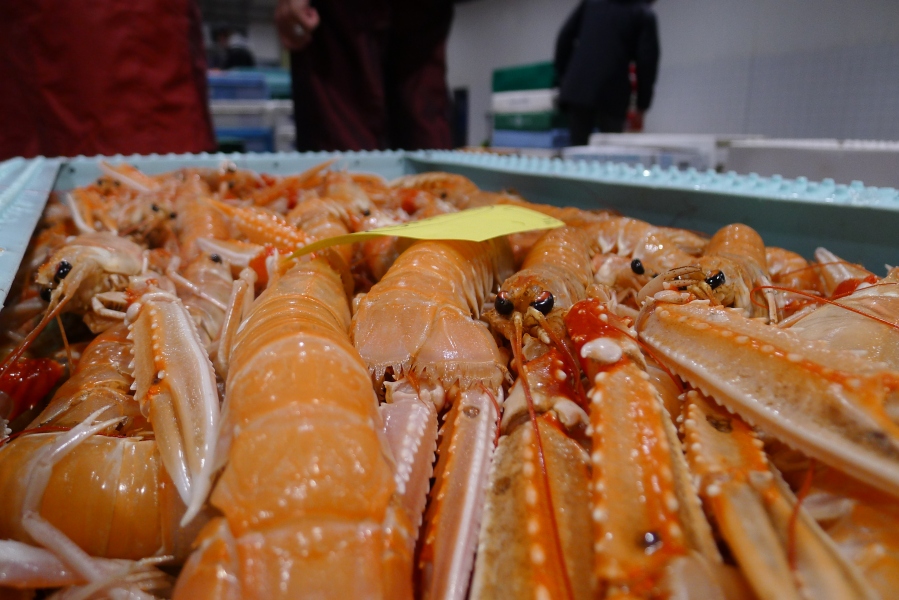
Another day, another slice of Sweden and we journey to the coast, to the little fishing town of Grebbestad, exclusively to fish for lobster with brothers Per and Lars Karlsson, experts in their field and impassioned exponents of the harvesting of lobster and oysters. Grebbestad is noted for its fishing community and indeed half of the lobsters landed in West Sweden are caught by vessels operating out of here.

As we approach the coast, the wind howls round the minibus and as the sea and its craggy shore hove into view, I get the overwhelming feeling that I’ve been here before. Not in this life I venture, but deep in my psyche lies a pervading sense of familiarity, so intense it prickles my skin. Somewhere, deep in my dreams…..
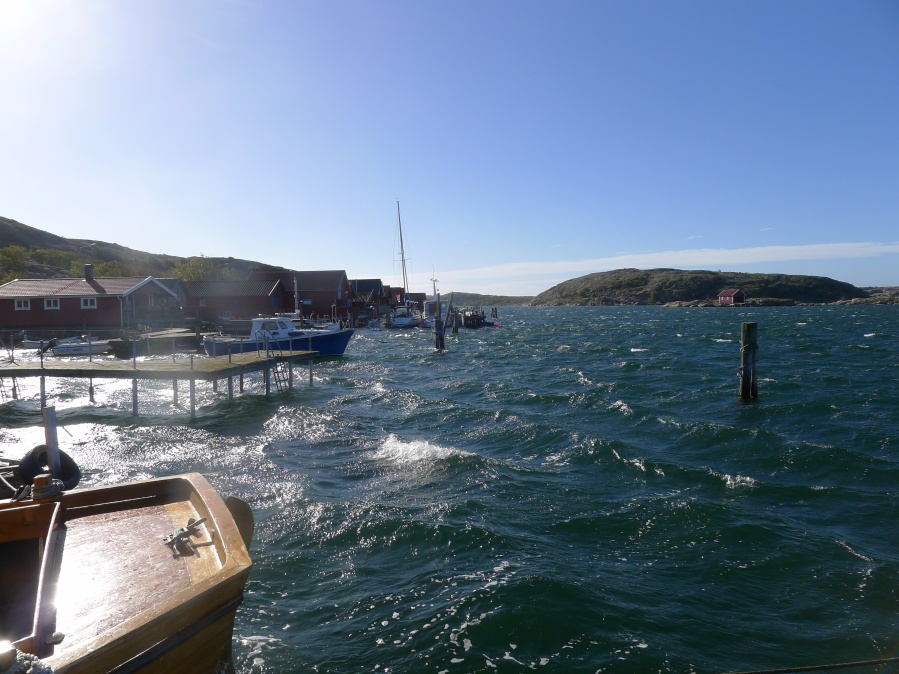
We arrive at the Karlssons’ beautiful boathouse. A choppy and effervescent sea lies beyond, cutting into the jetty and forcing their two traditional wooden boats to rock playfully on their moorings.

Our forthcoming trip may hang in the balance, but the experienced brothers indicate all will be well and gesture us to the boat, having donned our weather gear. Motoring into the lumpy bay, we head for a cluster of small isles which maintain a degree of shelter and allow us to haul a few pots.
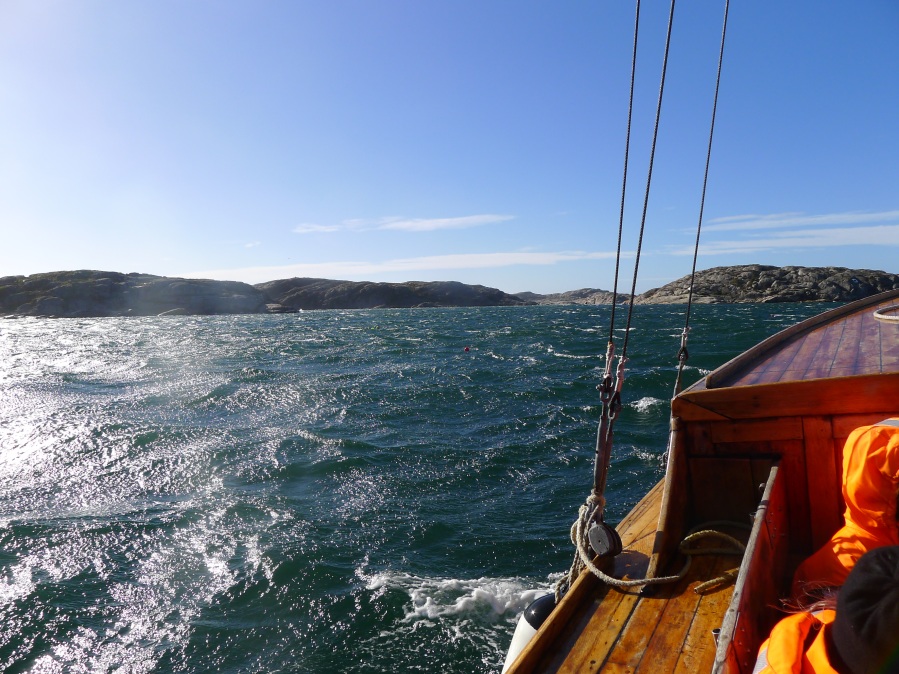
Being a (sometime) lobster fisherman myself, I’m keen as mustard to have a go and proffer my services for the first haul. Although conditions are far from ideal, it isn’t a difficult job and I can soon see why. Lack of tide. The boat holds position nicely into the wind as I heave the tow aboard, the pot leaving the seabed some 30 metres below.
The creel finally breaks the surface and I lug it aboard. No lobster this time, but a sizeable brown crab that I extract from the “parlour” of the pot and hold out to the delight of my companions. Rebaited with salted herring (just as back home) the gear is shot away again and we motor for the next marker.

The trip yields no lobsters, but all have had a go at hauling and once ashore again, we repair to the boathouse for a suitably atmospheric “Fruits de Mer” lunch overlooking the sea. Not before, I hasten to add, Per invites us to try freshly shucked oysters on the landing stage, plucked from the water just below with a long handled rake. I quaff them avidly. Divine. Absolute heaven in a shell and a fitting end to a trip afloat.

From Grebbestad we travel South to Fjällbacka, a delightful seaside town and gateway to the famous Weather Islands (Väderöarna), where we are due to reside that evening. A picturesque and enchanting town where we learn of its long and happy association with Ingrid Bergman and her family, the legacy of which has now been firmly etched into local folklore.
Stretching out, on the far reaches of the archipelago, these barren and desolate seal-inhabited outcrops, up until 1964, housed the remaining vestiges of the Swedish pilot service, where for many years, obliging local seamen would chart the treacherous waters for visiting craft, in return for payment either in krona or alcohol! The main island is now a bespoke destination for those requiring peace and solitude and Pia and Mike Hansson have made them their own, establishing a guest house that sits at the heart of a thriving holiday business.

The 30 minute sea journey there is predictably bumpy, as we head into the weather, but well worth it. On landing, the warmest of welcomes awaits and having been allocated our accommodation, we meet up in the guesthouse for much needed coffee, cake and Fika.
Pia Hansson explains how they took on the islands, having fallen in love with the area, after a serendipitous meeting with the then owner. Ten years of hard work and privations ensued, culminating in an establishment now recognised as one of the most iconic destinations in West Sweden and a must for anyone seeking solace in their adventures. The beauty and awe of the rising and setting sun, drawing visitors time and time again to bask in the islands’ serenity. “Andas in…..andas ut……njuut.” (Inhale….exhale…enjoy) is their catchphrase and you can’t help but concur.
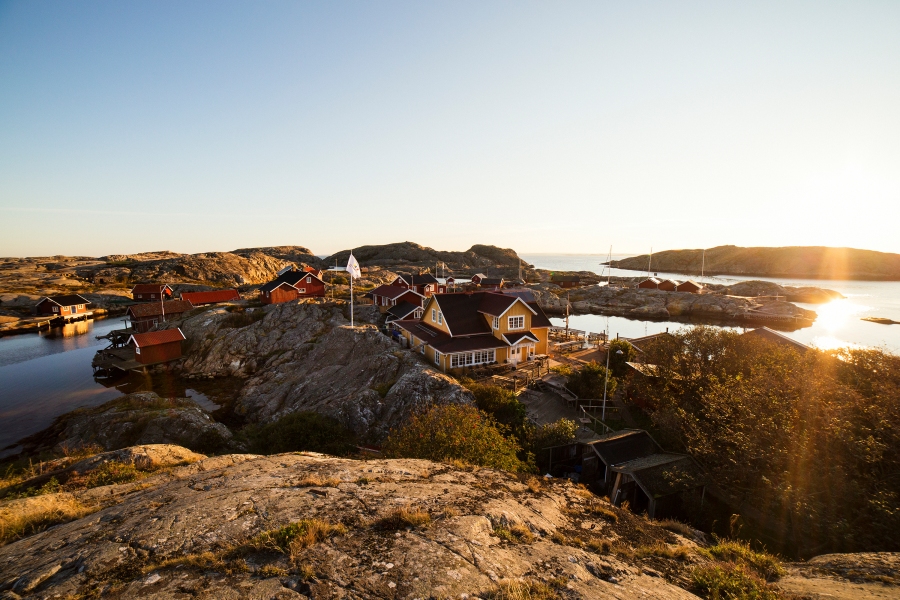
Following an obligatory introduction to saunas and bathing, (Swedish style – sweat, icy sea plunge, repeat), I feel “refreshed” to say the least and with a voracious appetite head to the little dining room where another meticulously prepared selection of local seafood awaits.
Toast Skagen (Skagenrora) is a Swedish staple and is a delicious meld of flavours using their most-succulent cold waters prawns in combination with soured cream, creme fraiche, cognac, masses of chopped dill and white pepper. Folded together and lavishly spooned atop home made sough dough toast, it was the first recipe I replicated on my return home. A massively flavoursome dish, easy to prepare and ideal as a starter, brunch or supper which, I believe, would work incredibly well with langoustine tails, for an injection of decadence.
Delicately poached plaice follow, adorned with a shrimp sauce, another local speciality. Recalling the gloriously-spotted deep water plaice from the fiskauktion the day before, I revel in the subtleness of the flavour combination and the simplicity of its presentation.

The following morning blasts in, grey and imposing from the Skagerrak. I walk to the old pilot house high up above the tiny harbour and feel the full force of the gale, tearing across the archipelago, white caps picking out the lines of surf and hidden reefs in mesmerising beauty.
Although rough, the boat trip landward, is easier than our previous passage and running before the weather, the powerful diesels of the islands’ ferry makes slight work of the conditions.

Landing back in Fjällbacka we bid our farewells to Pia, her beautiful Bernese Mountain dog “Elsa” and journey to Ljungskile for our daily fix of seafood at Musselbaren, (The Mussel Bar) in the form of the dazzlingly ultramarine and invariably moreish, rope-grown mussels from the adjacent fjord.
Cooked for us “al fresco” in one of the largest woks I’ve ever set eyes on, it’s a sight to behold, as onions, garlic, carrot, parsley and seasoning combine with white white and olive oil to create an aroma that’s all pervading. The sizzle and hiss of the stock is only stifled by the addition of the mussels, tipped ceremoniously into the mix and respectfully stirred before sealing under a stainless steel lid to steam open and infuse with the delicious liquor.

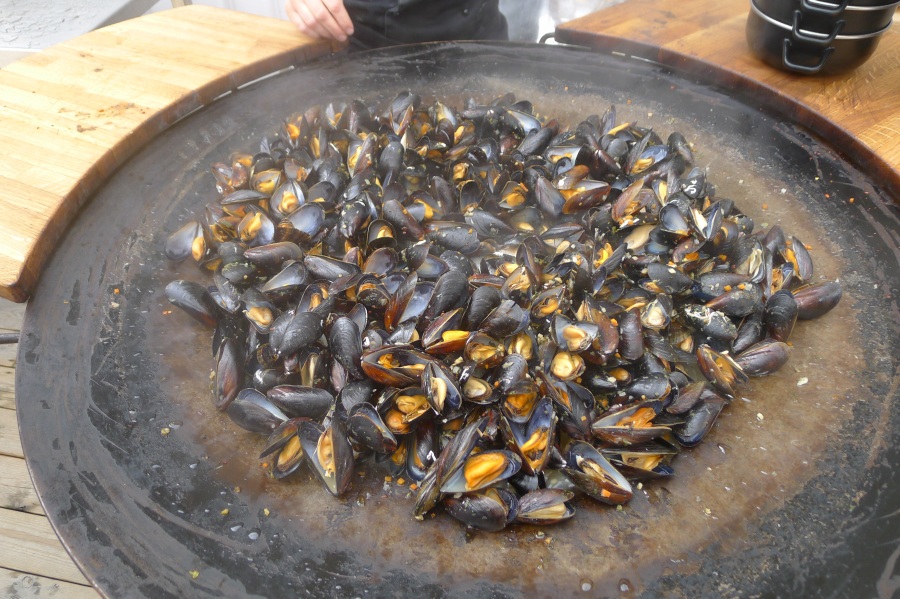
Mussels for all then, with perfectly cooked fried potatoes and aioli sets us up for yet another memorable Bohuslän luncheon, complete with great company and an explanation of how important the mussels are to the environment. The 2500 tonnes of them lying suspended in the adjoining fjord, filtering thousands of litres of seawater per day, means a significant benefit for the water quality in a totally and environmentally sympathetic way. Harvested at two years old, the confluence of currents here allows a nutritious mix of protein and minerals that underpin their quality.
Following the lunch, it’s time to head for our final destination. The island and village of Klädesholmen (Herring island) an ancient herring fishing community, is home to Sweden’s first floating hotel Salt & Sill and our accommodation for the last night. The island’s wealth originally stemmed from “The Great Herring Period” in the late 1700’s when much was made of the vast shoals that inhabited the local waters until their disappearance about 1808.

Built with consideration to the distinct lack of building space on the island, the hotel is the brainchild of Susanna and Patrick Hermansson and assembled from a group of modular pontoons built in Wallhamn and towed across the sea (under flat-calm conditions) to the designated site.
Although, superbly designed and furnished, it satisfyingly lacks pretension and the unique style of accommodation is made all the more of an experience by the gently rocking and creaking of the hotel’s timbers, capturing very effectively, the notion of being seaborne.
Following the, by now customary, sauna and bracing plunge, we’re already looking forward to dining once more, in the captivatingly panoramic restaurant.
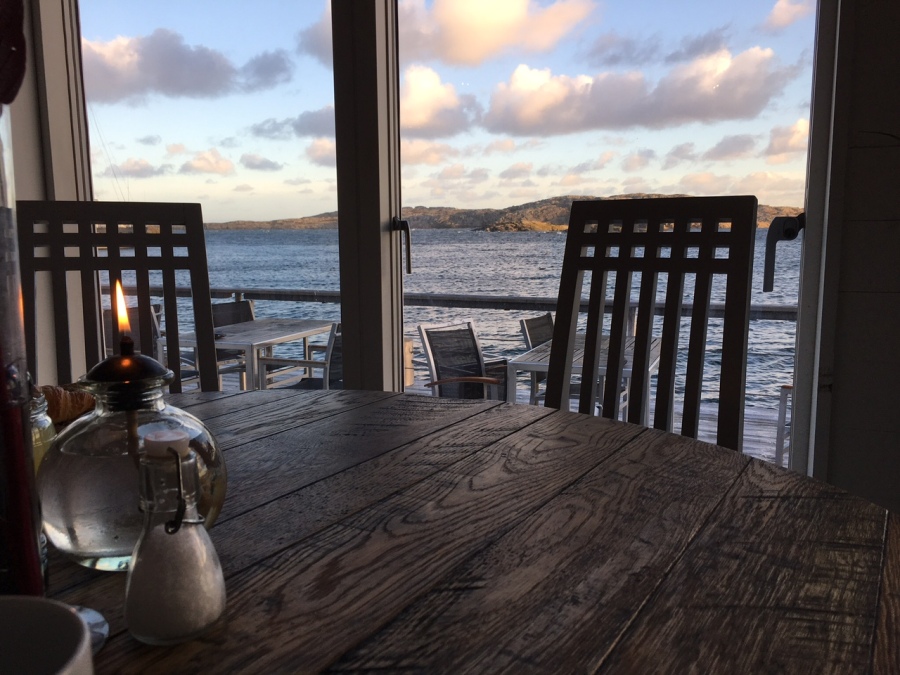
Our last meal in West Sweden is quite simply a triumph.
Hake with delicately sliced fennel and served with a foamed mussel broth, is quite possibly of one finest fish dishes I’ve had the pleasure of consuming, not just here in Sweden but anywhere this year. Without qualification delicious and a fitting way to complete my odyssey in a country, which, I’ve already come to love dearly. Savouring every morsel is a delight and true testament to the culinary skill of the chefs here, who evidently rejoice in the quality of the produce. I retire that evening a happy traveller, replete with the knowledge that I have relished every ounce of this trip. Bravo västsverige! You have me hooked.

Standing on the platform of the spotless and deserted Stenungsund station, the next morning, awaiting my transit to back to Göteborg, I have chance to reflect on my time here, in this inescapably beautiful region. The sights and sounds of the Bohuslän coast have engrained themselves in me and I’m contentedly thankful. The hospitality and generosity have overwhelmed me and already I yearn to stay. I’ve met the most delightful people, learned the most fascinating of histories and moreover, eaten some of the finest seafood imaginable.
West Sweden?
Åh Herregud! (Oh my God!)


The best shrimp sandwich in Göteborg is at Heaven 23 at the top of Gothia towers
LikeLike
The biggest for sure, but hardly the best as the shrimp aren’t fresh. Brine preserved.
LikeLike
“Andas in…..andas ut……njuut” is a rule to live by! What a fabulous trip and what glorious seafood. They couldn’t have picked a better man to write about it.
LikeLike
Thank you Linda. Glad you enjoyed ! It was a really lovely experience.
LikeLiked by 1 person
With your outstanding writing skills and great photos, you have made me really homesick. Will book a trip ASAP and can wait for my Toast Skagen!
LikeLiked by 1 person
Thank you Jeanette. You’re too kind. I loved every minute. Toast Skagen is a big hit at home now! x
LikeLiked by 1 person
Love your eloquent language. What a pleasure to read! Even as a native “västkustian”, there were a couple of spots I haven’t been to which I definitely want to visit now.
LikeLike
Thank you Emma. That’s so kind of you to say.
LikeLike
[…] up came my recent foray to the beguiling and mesmerizingly beautiful Bohuslän coast of West Sweden, where once again I feasted, on an abundance of their own natives, of a […]
LikeLike